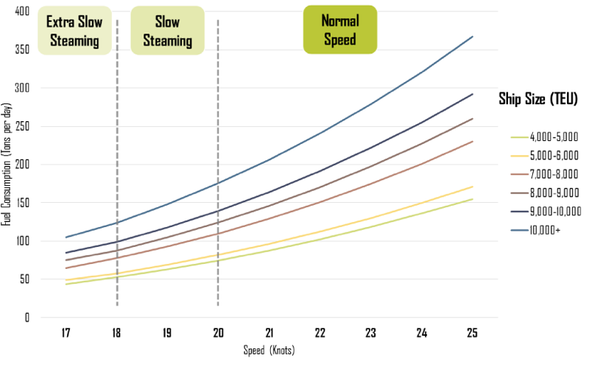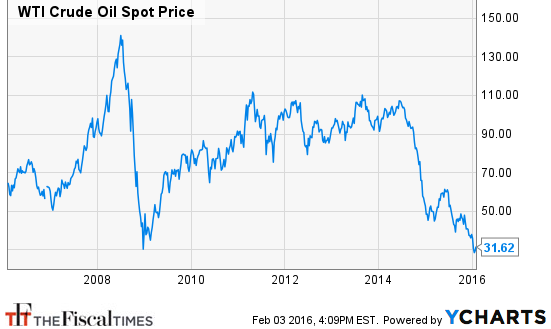 The slow Steaming designed by the Danish shipping company Maersk, is created with the aim of decreasing the level of costs related to the sailing. The slow steaming as suggested by the word “slow” consists in the reduction of the velocity: this reduction is quantified from 27/28 knot to 20 or less and the costs saved are about an amount of two and a half million dollars of fuel.
The slow Steaming designed by the Danish shipping company Maersk, is created with the aim of decreasing the level of costs related to the sailing. The slow steaming as suggested by the word “slow” consists in the reduction of the velocity: this reduction is quantified from 27/28 knot to 20 or less and the costs saved are about an amount of two and a half million dollars of fuel.
 This strategy created in the early 2000, was thought as reply to the constantly increase of oil’s price and the relative price of Bunker. The 2008 signed the highest oil’s price level with an oil barrel payed 150 USD. We can easily understand the reason behind the choice of Maersk and the other Shipping Lines.
This strategy created in the early 2000, was thought as reply to the constantly increase of oil’s price and the relative price of Bunker. The 2008 signed the highest oil’s price level with an oil barrel payed 150 USD. We can easily understand the reason behind the choice of Maersk and the other Shipping Lines.
 Unfortunately, the market is unpredictable by its nature, and the oil’s price dropped. A barrel paid 150 USD in 2008 is paid during this 2016 30 USD at Barrel.
Unfortunately, the market is unpredictable by its nature, and the oil’s price dropped. A barrel paid 150 USD in 2008 is paid during this 2016 30 USD at Barrel.
Another important asset, that the Slow Steaming made, was the increase of the level of world fleet, obviously being a decrease the velocity of vessels the consequence was a minor capacity of satisfice the market, and the world fleet grown.
In this dizzy market, the reason behind the Slow Steaming are not necessary anymore. The price of 30 USD makes the slow sailing not a high performance. That can be explained easily because of the level of bunker’s price that make more attractive and suitable to the ownerships to reduce their fleet and make faster the velocity of own vessels.
The criticality is clear: a lot of vessels can’t sustain the speed of 27/28 knot, because designed for a sailing under 20 knots; therefore, the return to a normal velocity should be excluded by the same market, because remarkable numbers of vessels with a normal velocity, would be destined to be out of the market.
With the aim of converting the Slow Steaming into Smart Steaming has been designed Synchro-NET, to show that synchro-modal logistics optimization delivers amazing benefits to all stakeholders in the supply chain:
Within this concept take place the “Smart Steaming”: a better synchronization among the different actors allows shipping companies to adopt slow steaming strategies without introducing any delay in the supply chain, optimizing the current resources in terms of costs and efficiency
Source: On the MoS Way